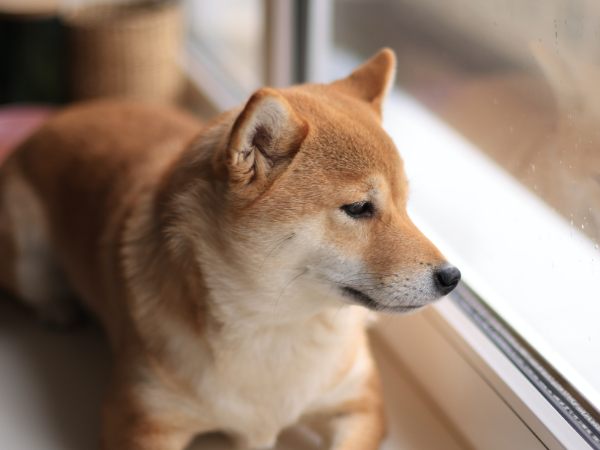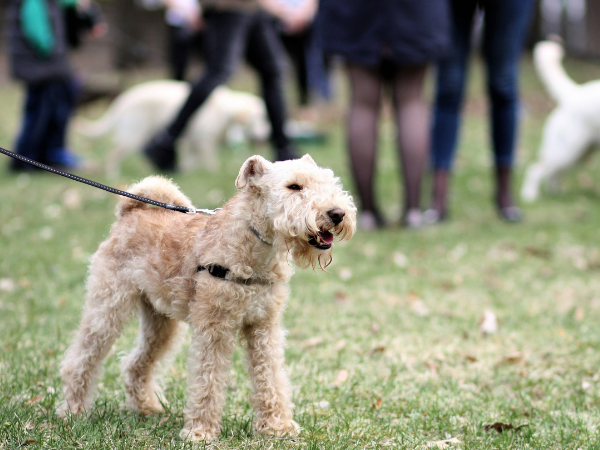Dogs, like humans, can experience a range of fears and anxieties. While some dogs may only be mildly anxious in certain situations, others may suffer from debilitating fearfulness that significantly impacts their quality of life. This blog will discuss the most common canine fears and some tips on how to treat them.
The Most Common Dog Fears

When your dog is scared, it may exhibit various behavioral and physical symptoms. They may try to hide, tremble, bark, or even become aggressive. It’s important to remember that each dog is an individual and will react differently to its fears. Some of the most common canine worries include:
Fear of Loud Noises
Many dogs are afraid of loud noises, such as thunderstorms, fireworks, and gunshots. This fear can prevent dogs from enjoying walks, going outside, and even being in their homes.
Systematic desensitization is a popular method of treatment for this type of fear or phobia. This involves slowly and gradually exposing your dog to the noise they’re afraid of, starting at a level that doesn’t cause them any distress. Over time, as they become more relaxed and comfortable, the volume is increased until they no longer react with fear.
You can also have them take natural supplements like this Stress-Free Calmplex. It aids the canine’s body’s natural processes for dealing with physical and mental stressors.
Fear of Unfamiliar People or Animals

Some dogs are fearful of unfamiliar people or animals, and this fear can be triggered by a number of different things, such as a bad experience, genetics, or even just not being socialized enough as a puppy. This type of fear can make it difficult for your dog to interact with other dogs at the park, make new friends, or even go to the vet.
The way to help your pet get used to these unfamiliar people or animals is to do it at their own pace. Let them approach new people and animals when they’re ready, and never force them to interact if they’re hesitant or scared. Reward them with treats or praise whenever they do take a step out of their comfort zone.
A Dog’s Fear of Abandonment
Many dogs suffer from separation anxiety, which is a fear of being separated from their guardians. Especially during COVID, dog owners saw a huge increase in this type of anxiety as people were suddenly home all the time and then had to leave again. This can lead to destructive behaviors, like chewing on furniture or excessive barking, when their guardians are away.
To help ease your dog’s fear of abandonment, start by leaving them for short periods of time or even just a few minutes. Then gradually increase the amount of time you’re gone. While you’re away, make sure they have plenty of toys and chew treats to keep them occupied. And when you come back, don’t make a big fuss – calmly greet them and go about your business as usual.
Related Article: How to Calm Down a Dog
Fear of Vet Visits
Many dogs are scared of going to the vet, and this fear can be exacerbated by previous bad experiences, such as being poked and prodded or having unpleasant procedures done. This fear can make it difficult to take your dog to the vet for routine check-ups or vaccinations and can even make them resistant to getting in the car.
You can do a few things to help your dog overcome their fear of vet visits. First, try to find a vet that specializes in treating anxious dogs. They will be more understanding and patient with your dog. Second, make sure you’re not reinforcing your dog’s fear by showing them that you’re also anxious about going to the vet. Stay calm and positive, and give them lots of treats during and after the visit.
Fear of Grooming in Dogs
Many dogs are afraid of being groomed, whether it’s getting a bath, having their nails trimmed, or getting their fur brushed. This fear can be caused by a number of things, such as previous bad experiences, genetics, or even just the unfamiliarity of the situation. This fear can make it difficult to take care of your dog’s grooming needs and even lead to them resisting being touched altogether.
The best way to help your dog overcome their fear of grooming is to do it gradually and at their pace. Start with just one or two grooming tasks, like getting their nails trimmed or having their fur brushed. Reward them with praise or treats whenever they cooperate. And if they start to get anxious or resistant, take a break and try again later.
Summary
There are many different canine fears, but the most common are fear of unfamiliar people or animals, fear of abandonment, fear of vet visits, and fear of grooming. A number of different things can cause these fears, but the best way to help your dog overcome them is to do it gradually and at its own pace.
Reward them with treats, chews, or other natural supplements from Springtime Supplements whenever they take a step out of their comfort zone. And if they start to get anxious or resistant, take a break and try again later.

